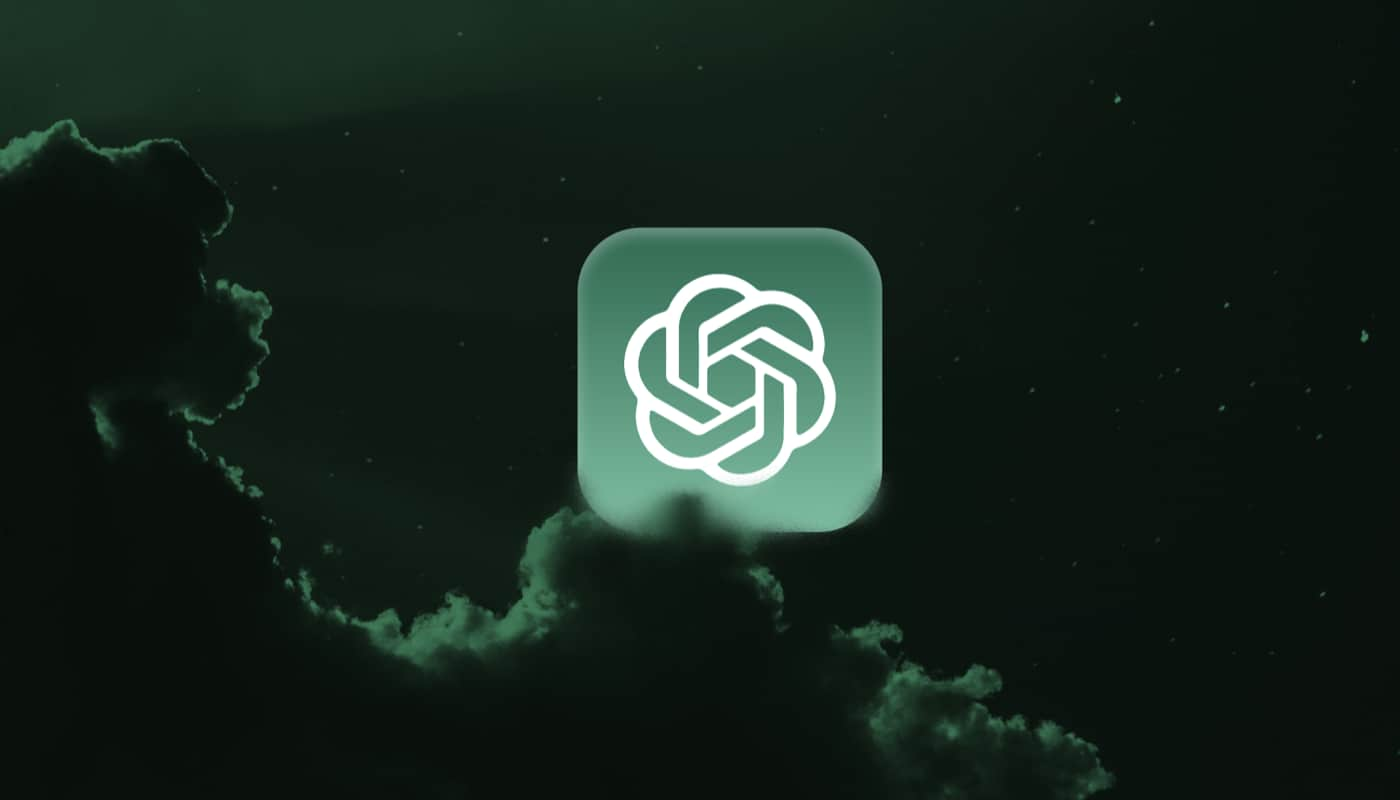The release of GPT-4.5, coupled with OpenAI CEO Sam Altman's repeated hints that the new model is “well worth the wait,” signals that the countdown to the launch of GPT-5 has begun.
Since Altman first publicly confirmed the existence of GPT-5 in 2023, rumors about it have never ceased.
Over the past few months, we have heard multiple leaks from Altman and developers claiming that it will be capable of autonomously executing tasks. Does this mean ChatGPT 5 has already developed cognitive abilities and can begin to think independently? Has the distance to AGI been further bridged?
Today, this article will combine Altman's statements on X (formerly Twitter), leaked details from the developer community, and extensive user discussions to predict the exact release date of ChatGPT 5 and what features we can look forward to.
According to recent reports from media outlets such as The Verge and Axios (July 24, 2025), ChatGPT is set to be released in early August 2025.
As early as March 2023, an open letter from the Future of Life Institute first mentioned ChatGPT 5.0.
In November of the same year, Sam Altman confirmed the development of GPT-5 for the first time, stating that it was still in the early stages:
Before we trained the model, it was an interesting guessing game... I couldn't say for sure what it would do that GPT-4 couldn't.
Although no specific timeline was mentioned at the time, many users remained eagerly anticipating GPT 5.0.
A year later, two sources familiar with OpenAI’s plans revealed that GPT 5.0 was expected to launch in the summer of 2024, and even said that some enterprise clients had already previewed a demo version.
However, things did not unfold as planned, and by 2025, GPT-5 had yet to be released.
It wasn't until February 2025 that Altman began hinting at the imminent release of GPT-5 on X (Twitter). He shared a public roadmap, explicitly mentioning that GPT-4.5 was preparing for release, with GPT-5 to follow shortly thereafter. However, he only provided a vague timeframe of “a few weeks or months.”
OPENAI ROADMAP UPDATE FOR GPT-4.5 and GPT-5:
We want to do a better job of sharing our intended roadmap, and a much better job simplifying our product offerings.
We want AI to “just work” for you; we realize how complicated our model and product offerings have gotten.
We hate…— Sam Altman (@sama) February 12, 2025
Subsequently, in mid-June, Sam Altman made a statement in a video podcast on OpenAI's official YouTube channel, saying that GPT-5 “may be released sometime this summer” (2025).
Thus, the reports by media outlets such as The Verge and Axios that the highly anticipated GPT-5 model will be released in August this year have been confirmed.
Overall, GPT-5 had been anticipated earlier, but OpenAI's release plans have been changed multiple times. From Sam Altman's post on X, it is not only possible to predict the upcoming release, but the text also hints that GPT-5 will have significantly enhanced overall functionality and will introduce new features.
Competing Models May Speed Up ChatGPT 5 Release Date
While we wait for GPT 5, the AI market is already buzzing. Although ChatGPT was a revolutionary breakthrough in 2023, its competitors have also launched various models.
Google's Gemini 1.5 Pro is a prime example. By comparing Gemini and ChatGPT, its performance in text understanding and processing is widely regarded as comprehensively surpassing GPT-4.
Its greatest advantage lies in its strong ecosystem integration capabilities. It can help you summarize and draft responses to unread emails in your Gmail inbox or extract data from Google Docs to generate reports.
In contrast, ChatGPT is often restricted to browser-based use due to security policies and permission limitations, making it difficult to directly integrate with many websites and services.
This year, the AI boom has also extended beyond Europe and the US. China's DeepSeek-R1 model has sparked global discussion. It has already achieved performance on par with GPT-4o in benchmark tasks such as mathematics, coding, and reasoning.
Interestingly, some “all-in-one” AI tool platforms have emerged. GamsGo AI is one such example.
You no longer need to pay for five or six platforms each month; instead, it offers multi-model access. With just one account, you can use ChatGPT 4, Claude, Gemini, and even integrate Midjourney, AI image generation, AI video generation, and other functional AI features.
Perhaps the reason GPT-5 is constantly being “hyped up” at this point is to avoid falling behind. GPT-5 must not only be stronger but also smarter and faster to launch, in order to maintain its position as the “top AI player.”
Why Is GPT-5 Being Released Later Than Expected?
Although it is widely speculated that GPT 5 will be released in early August 2025, its release date has actually been postponed more than once.
As early as April 2025, Sam Altman posted on X (formerly Twitter), hinting that the development process had encountered many challenges and that the plan might change, requiring a delay in the release.
change of plans: we are going to release o3 and o4-mini after all, probably in a couple of weeks, and then do GPT-5 in a few months.
there are a bunch of reasons for this, but the most exciting one is that we are going to be able to make GPT-5 much better than we originally…— Sam Altman (@sama) April 4, 2025
One of the core reasons for the delay in releasing GPT 5.0 is security issues. As GPT models become increasingly powerful, their content output has become increasingly difficult to predict and control. If the system is not adequately restricted, it could generate the following concerning outcomes:
- Forged documents or proof materials
- Precise fraudulent content (such as counterfeit emails or phishing tactics)
- Hacking instructions or bypassing technical measures
In 2023, ChatGPT experienced a security issue where user privacy was compromised. A bug caused some users to briefly see others' chat titles and payment information for ChatGPT Plus users, including names, emails, the last four digits of credit cards, and expiration dates.
This incident prompted OpenAI to become more cautious, investing more resources in security testing, privacy protection, and model refusal mechanisms.
Better late than never, OpenAI chose to slow down rather than rush to release faster, waiting for a more mature release window in terms of technology, ethics, and security.
What Are the Features of GPT-5?
Although Sam Altman has kept us guessing about the specific capabilities of GPT-5, we can already piece together a preliminary outline from his comments on X over the past few months, developer leaks, and analysis from several tech media outlets.
He mentioned on X on July 19:
woke up early on a Saturday to have a couple of hours to try using our new model for a little coding project. done in 5 minutes. It is very, very good. not sure how I feel about it...
Although he did not explicitly state that it was GPT-5, based on the timing and description, it can be inferred that he was testing this upcoming GPT-5 model.
So what exactly makes GPT-5 “good”?
Enhanced Multimodal Capabilities
Currently, GPT models have relatively mature text and image interaction capabilities, and the update to GPT-4o has introduced voice dialogue into everyday use cases for the first time. Users no longer need to rely on keyboard input to engage in conversations with GPT and receive feedback.
On Reddit, many users have shared positive feedback on ChatGPT's voice interaction. One user mentioned that when they made a mistake, simply adding “sorry” caused the model to intelligently recognize the intended meaning of the preceding text, automatically ignore the incorrect portion, and provide a more precise response.

This “error-correcting experience” is one of the smart highlights that users feel when using voice input. Of course, some users have also pointed out that ChatGPT occasionally still has issues with ‘mishearing’ or “fabricating” information.

Such issues are common in voice AI, but they remain a challenge for user trust, which is precisely why users are placing high hopes on GPT-5.
GPT-5 will further enhance the understanding capabilities of voice models and reduce the likelihood of hallucinations. It’s not just about making you “speak clearly,” but about “understanding you,” grasping the tone, logic, and even the underlying intent of your speech.
Meanwhile, inspired by the launch of the Sora video model, many users are also anticipating that OpenAI will integrate video understanding capabilities with ChatGPT. While the answer remains unclear, based on Altman's hints about “multimodal upgrades” in various settings, GPT-5 is likely to incorporate video as a key component of its multimodal upgrade.
Larger Text Window
After the ChatGPT 4 update, its context window has been significantly expanded, now supporting up to 128K tokens (equivalent to a 100-page PDF report). However, it is important to note that this capacity is currently only available to developers using the OpenAI API.
For regular users, the ChatGPT Plus subscription still supports a maximum of 32K tokens (approximately 25,000 words), corresponding to the capacity of about 45 pages of a PDF document.
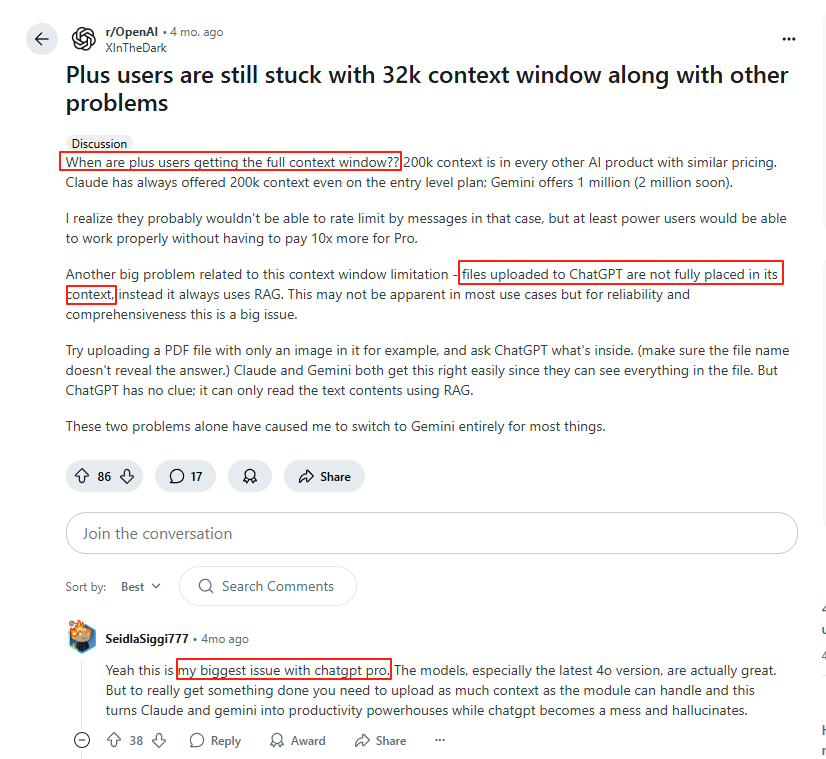
Despite this, we can still see the ongoing progress of GPT models in terms of context length. From the earliest GPT-3, which only supported 2,048 tokens, to the current 4.0/4o versions, which now support 128K tokens.
However, when we compare it with alternative products such as Claude, we can see that there is still room for improvement. Anthropic's Claude 2.1 already supports input exceeding 200K tokens (approximately 150,000 words), offering a significant advantage for users who need to process extremely long documents or large codebases.
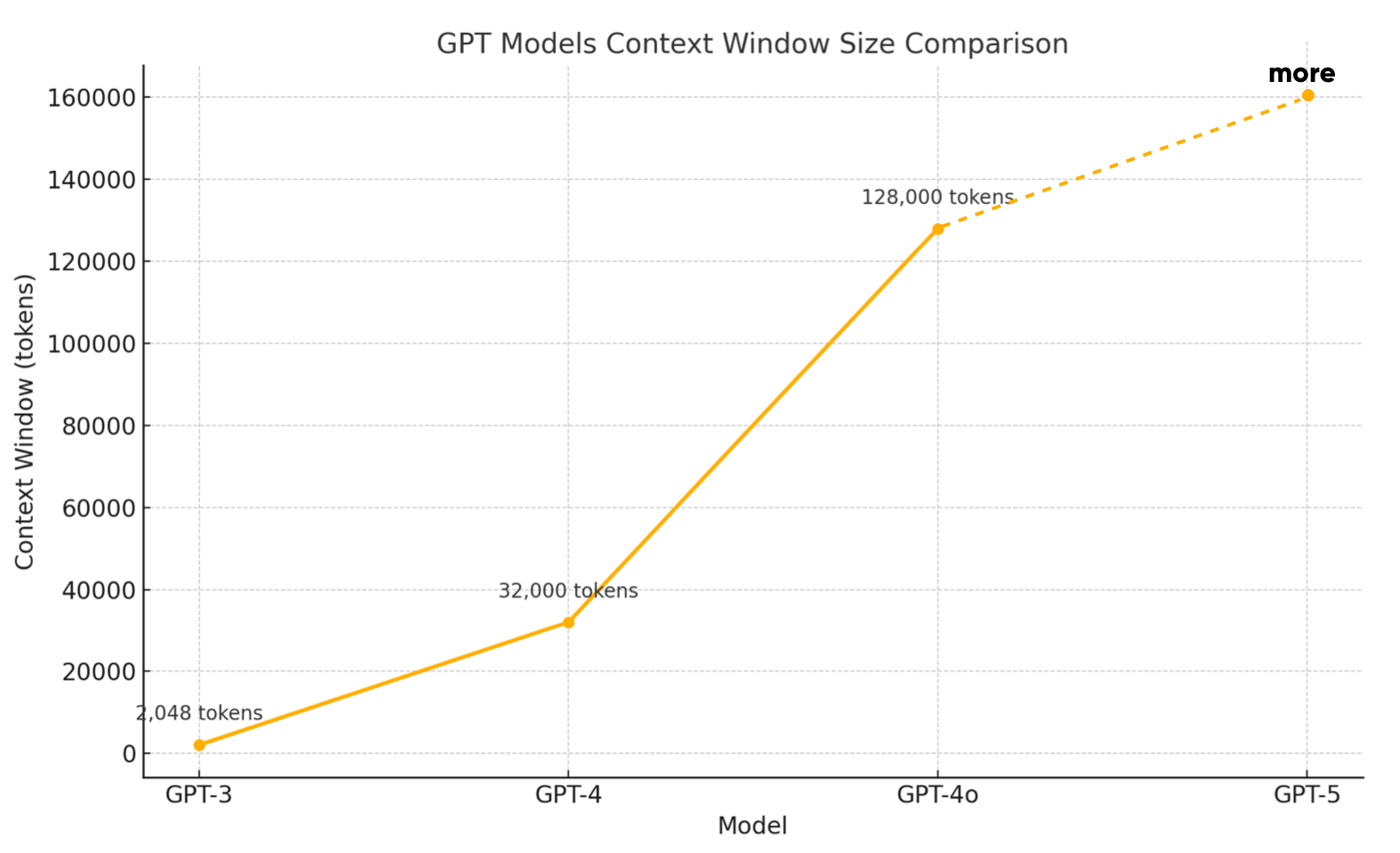
GPT-5 is widely predicted to further expand its context window, not only improving its ability to process long documents, but also enhancing its ability to track and understand complex conversations.
Stronger Reasoning
In GPT-4.5, OpenAI introduced reasoning traces for the first time, which means that when faced with complex problems, it can first break down the problem, then gradually reason through it, and finally reach a conclusion.
However, Altman said that this will be GPT's last “non-thought chain model.”
We will next ship GPT-4.5, the model we called Orion internally, as our last non-chain-of-thought model.
In other words, GPT-5 will begin to perform truly “human-like reasoning.” User feedback confirms this. Although GPT-4.5 does demonstrate stronger analytical capabilities in some tasks, many still believe that it tends to exhibit issues such as “redundant detours” and “logical disconnects” when reasoning about complex problems.
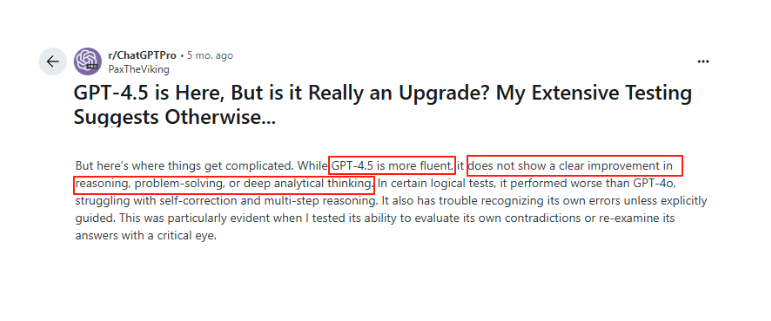
This also makes us eagerly anticipate the arrival of GPT-5. Not only will it continue to use reasoning traces, but it will also further optimize the “thought chain.” The reasoning process will become shorter and clearer, avoiding unnecessary verbosity and directly presenting key steps.
Fewer Hallucinations
What are “hallucinations”? They refer to AI fabricating information that does not exist. ChatGPT often exhibits this behavior, especially when understanding less common languages, such as fabricating literature or fictional events.
However, Altman emphasized that one of the key improvements in GPT-5 is reliability, specifically minimizing hallucinations as much as possible.
To reduce hallucinations, OpenAI is using reinforced training data and stricter refusal mechanisms to lower the hallucination rate. This rate has been reduced from 80.3% in the 03 model to 37.1% in the 4.5 model, and is expected to be further reduced to 15% in GPT-5.

Autonomous Agent Functionality
Among all the feature updates in GPT-5, “autonomous agents” are undoubtedly one of the most innovative breakthroughs. With this feature, you can call upon AI agents to autonomously execute tasks. Sam Altman has hinted that GPT-5 will have the ability to “call upon tools and agent systems.” In other words, it can:
- Autonomously manage workflows
- Conduct research while you sleep
- Write, test, and deploy complete applications
The key lies in its ability to autonomously plan and execute a series of operations without requiring manual instructions for each step. Compared to the past, where you had to guide GPT step by step or manually invoke tools, GPT-5 now possesses proactivity and “thinking” capabilities.
More Parameters
Using a simple analogy, parameters are like human memory. The more parameters there are, the more the AI knows. Some users are concerned: “Will GPT-5 have a particularly large number of parameters?”
Although the official has not disclosed the number of parameters since GPT-3.5, there have been some unfounded rumors that it will have a model with 100 trillion parameters, but these have been explicitly refuted by Sam Altman.
Some industry insiders and analysts have estimated the parameter count to be between 3 and 5 trillion.
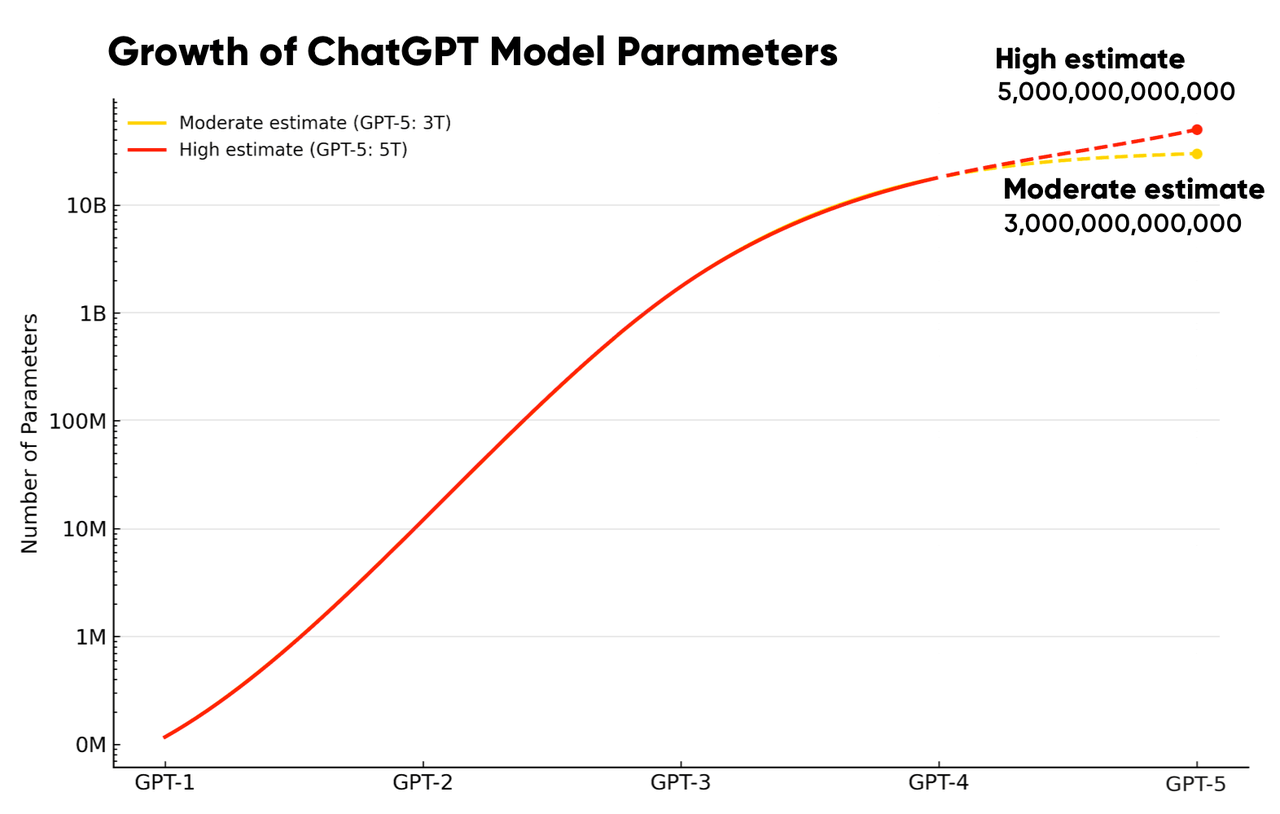
However, more parameters do not necessarily mean that your AI assistant is smarter. GPT 5 is not just a simple increase in parameters, but also requires training it to use the parameters wisely.
In a 2023 podcast interview with Lex Fridman, Sam Altman made a rare criticism of his own product, stating that both GPT-4 and GPT-3 are somewhat inferior compared to GPT-5. He added, “I expect the gap between GPT-5 and GPT-4 to be the same as the gap between GPT-4 and GPT-3...”
To predict how powerful GPT-5 will be, let's first review the core differences between GPT-4 and GPT-3:
- Larger parameter scale: This means it can process more complex information with updated input.
- Fewer “hallucinations”: Compared to GPT-3, GPT-4's responses are more reliable, with a lower likelihood of fabrication.
- More language support: Supports 26 languages, with excellent performance even in non-English environments.
- Enhanced multimodal capabilities: GPT-4 added support for image input, and later GPT-4O added support for voice input.
- Expanded context window: GPT-4's maximum context window has been expanded to 128K tokens, enabling it to process entire books or large-scale code.
The upgrades in GPT-5 build upon these foundational capabilities, including enhanced context processing, stronger multimodal interaction, higher-quality reasoning chains, and more intelligent task agency capabilities.
Let's take a look at a table that details the differences between GPT 4 and 5:
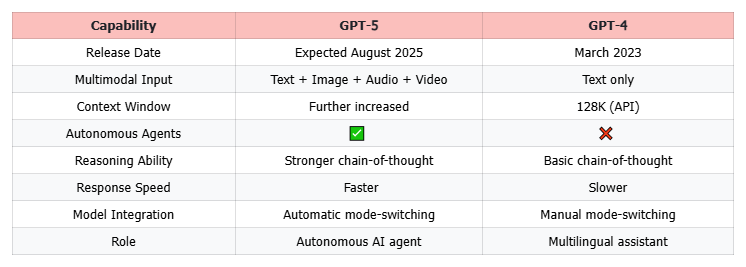
GPT-5 is shaping up to be a major leap forward across nearly every dimension. One of the biggest changes is the introduction of autonomous agents in GPT-5. These agents can independently manage tasks and call upon external tools. GPT-5 is more like an assistant than GPT-4, rather than a "powerful search engine."
Another truly disruptive change in GPT-5 lies in the redesign of its product architecture.
Altman's post on X stated, “Currently, OpenAI's product classification is overly complex.” Users often need to manually switch from the default GPT-4o model to the o1 or o3 models when handling complex mathematical or logical tasks.
Compared to GPT-4, GPT-5 will integrate all of OpenAI's core models (GPT series + o series) into a unified supermodel, and users no longer need to select a model version.
As Sam Altman put it, GPT-5 will “know when to think for a long time and when not to.” Because it will automatically identify your needs based on your input and activate the corresponding capability modules.
GPT-5 will redefine artificial intelligence, as mysteriously revealed recently on X:
Our research team did something unexpected and quite amazing, and we think it will be very, very worth the wait, but it needs a bit longer.
We still don't know how amazing GPT-5 will be, but this statement is enough to whet everyone's appetite. Perhaps it will be a whole new way of human-computer interaction, or perhaps it will be a more powerful thinking agent system.
Some people may even ask the question again: Will GPT-5 be AGI?
AGI refers to an intelligent machine that can understand any field like a human being and has cognitive and autonomous learning abilities.
From the few hints that have been revealed, it is clear that GPT 5.0 is far more intelligent and better at understanding human language logic than GPT-4o and GPT-4.5.
It can not only converse with you, help you with programming and writing reports, but also invoke tools, control processes, and automatically execute commands.
Does this sound like artificial intelligence has gained autonomy? However, the key point is that it still does not think about “why it should do this” and has no subjective intent. The basis for its task execution remains the vast training data and sophisticated algorithms.
Therefore, GPT-5 may not be AGI, but it is likely the closest thing to AGI before the arrival of the AGI era.
All these questions may be answered in GPT-5. And we are about to welcome that much-anticipated “few weeks from now.”
FAQ
Is ChatGPT 5 out?
No. As of now, OpenAI has not officially released ChatGPT-5. However, based on a series of leaks and insider statements, it is widely expected to be released in early to mid-August 2025.
How much better is ChatGPT 5 than ChatGPT 4?
ChatGPT-5 will be even smarter than ChatGPT-4. It will have stronger multimodal understanding capabilities, faster response times, and fewer errors in its responses. It will also be better at understanding context and executing complex instructions.
What is the latest version of ChatGPT?
As of July 2025, GPT-4.5 is our latest model. It can handle text, images, and audio, and has improved pattern recognition and reduced hallucinations—but it does not replace GPT-4o in the ChatGPT interface.
Related Articles:

